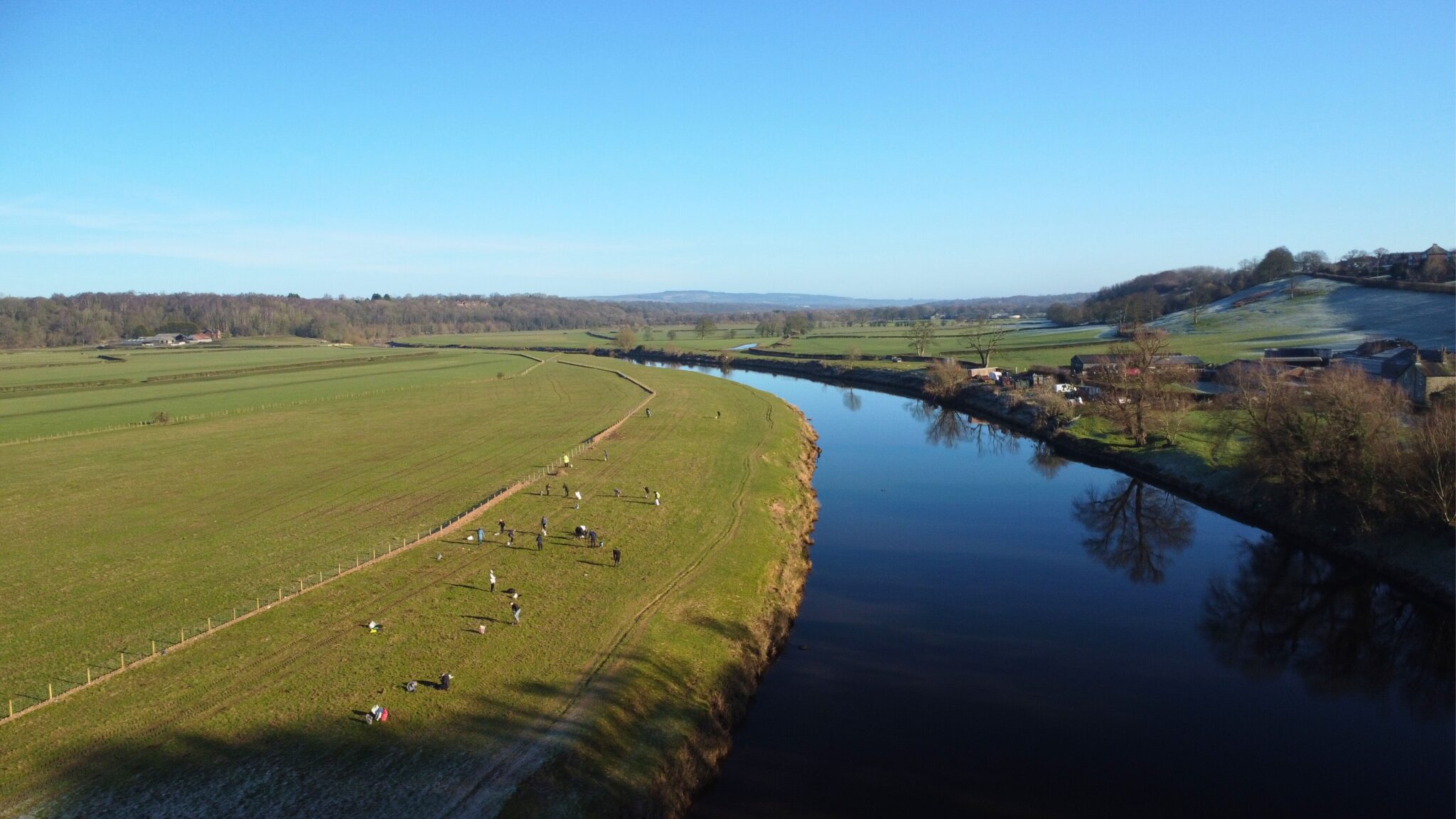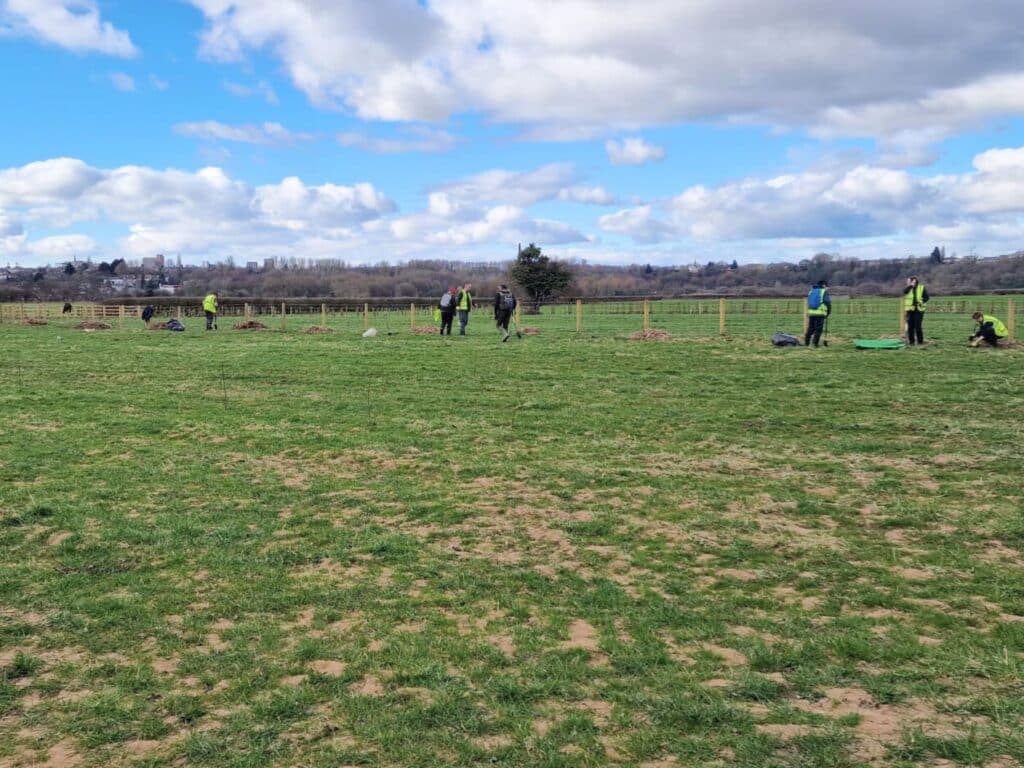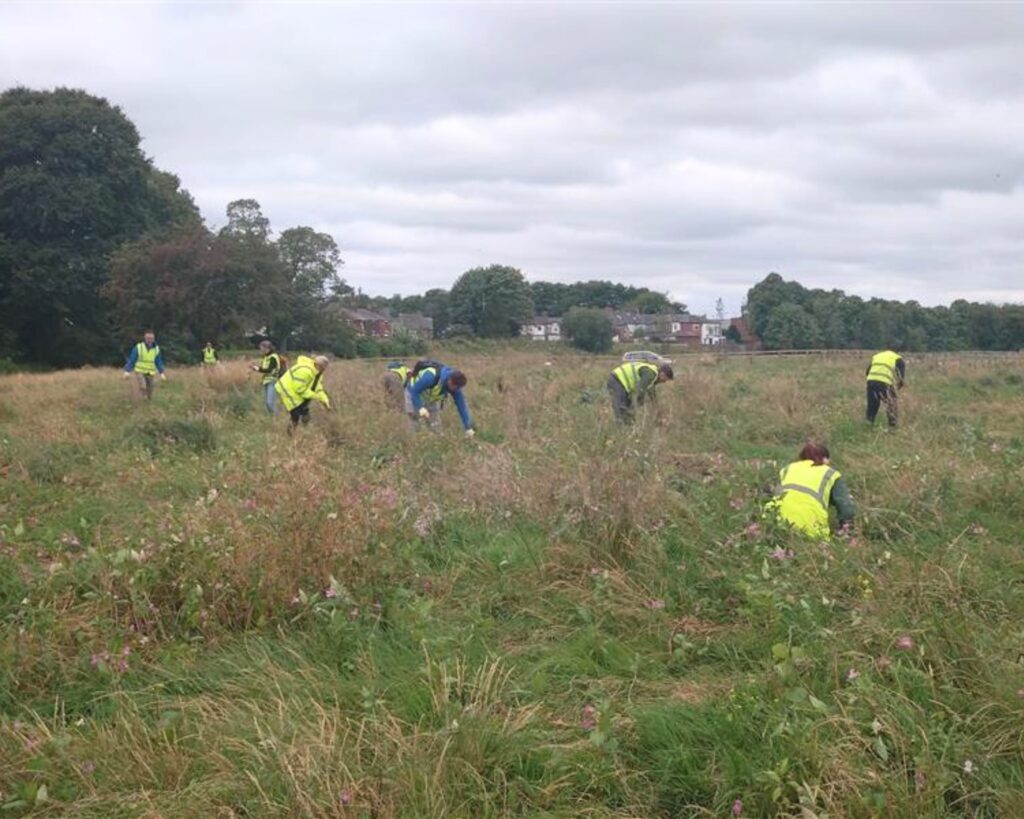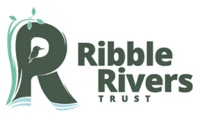
Planting for the Future at Fishwick Bottoms
The city of Preston and the surrounding towns and villages have faced flooding for centuries, caused by a combination of tidal flows moving upstream from the sea and excessive rainwater flowing downstream. Over the years, a series of flood defences have helped to reduce this risk.
However, as the city continues to grow, and climate change brings more extreme weather, these old flood defences are reaching the end of their design life. So, they now need repairing, replacing, and extending.
To tackle this challenge, the Environment Agency are delivering the Preston and South Ribble Flood Risk Management Scheme (FRMS). This major scheme will provide improved flood protection for around 5,000 homes and businesses.
While Ribble Rivers Trust isn’t delivering the flood defences themselves, we’re supporting the scheme and ensuring the work also creates benefits for nature.
Why Fishwick Bottoms?
Throughout the delivery of the Preston and South Ribble FRMS scheme, it will be necessary to remove a number of trees to make way for the flood defences. These losses must not only be balanced, but also improved upon. That’s where Fishwick Bottoms comes in.
Located on the banks of the River Ribble, just across the water from Walton-le-Dale and close to the city centre, Fishwick Bottoms is a much-loved green space. It’s part of the “Ribble Free Stretch”, a prime spot for anglers. It also lies along the Ribble Way, the 72-mile walking route from the estuary to the river’s source at Ribblehead in North Yorkshire.
As part of the Environment Agency’s BNG commitment, Fishwick Bottoms is now home to a brand-new riverside woodland which is bigger, better, and more biodiverse than before.
11,800 Trees and Counting!
Over the past year, we’ve planted 11,800 native trees along a 2km section of the Ribble at Fishwick Bottoms. That’s roughly 12 new trees for every one that contractors remove during engineering works.
Our mix of native species includes English oak, wych elm, hawthorn, hazel, alder, silver birch, downy birch, goat willow, grey willow, crack willow, elder, holly, and blackthorn. Together, these trees will grow into a diverse riverside woodland teeming with life.

The riverbanks here have also been badly affected by erosion and livestock poaching. So, we’ve also installed 1200 meters of livestock fencing and access gates to protect the habitat. Livestock can still access clean water through six livestock drinking areas. However, these are now away from the banks, reducing pressure on the river and helping to improve water quality.
We’ve also removed invasive non-native plants and improved access for farmers. To do this, we’re using a new net zero, rapid-setting concrete for gate installations; a small but important innovation that reduces environmental impact.
Benefits for Wildlife and Rivers
As well as offsetting lost trees, this woodland will have big benefits for biodiversity in its own right. In time, this site will become a thriving habitat for a wide range of wildlife; from insects and small mammals to woodland and water birds.
The trees will also protect water quality by filtering out sediments and pollutants before they enter the Ribble. This helps to create cleaner water for migratory fish such as Atlantic salmon, brown trout and European eel. But is also benefits coarse species like chub, dace, roach, and barbel.
Woodlands are also a powerful tool for Natural Flood Management (NFM) in their own right. A woodland of this size can capture and store huge volumes of water through natural processes. As these trees grow, their roots will break up compacted soils. This allows rainwater to soak in instead of running straight into rivers. They also slow the flow of water during heavy rainfall, complementing the new engineered flood defences.
The Finishing Touches
Most of the planting is now complete, but we’re adding the final touches with coir mulch mats at the base of each tree. These plastic-free mats reduce competition from weeds, helping young trees establish and importantly, they avoid the need for plastic guards. This is especially important as the site itself is prone to flooding. Whilst the trees are resilient to occasional floods, tubes can get washed away.
Fishwick Bottoms is now set to grow into a thriving riverside woodland.


Rivers are at the heart of our local landscapes. Whether you’re casting a line, exploring a riverside trail, or simply basking in the beauty of nature, you can help protect these special places now, and for generations to come.
By becoming a Ribble Rivers Trust supporter for just £3 a month, you’ll be funding real, on-the-ground action.
Ready to make a difference? Learn more here: ribbletrust.org.uk/become-a-supporter

